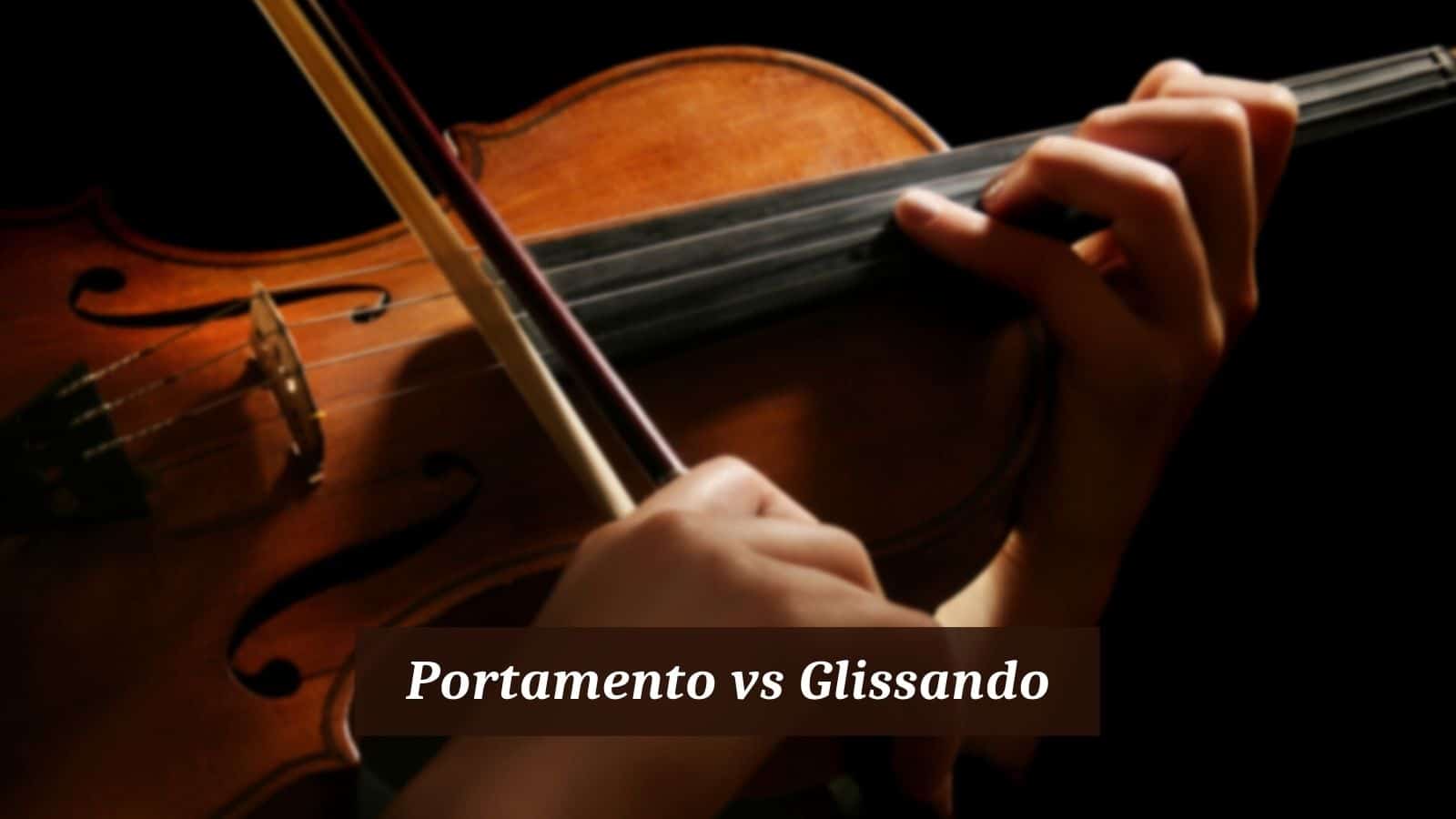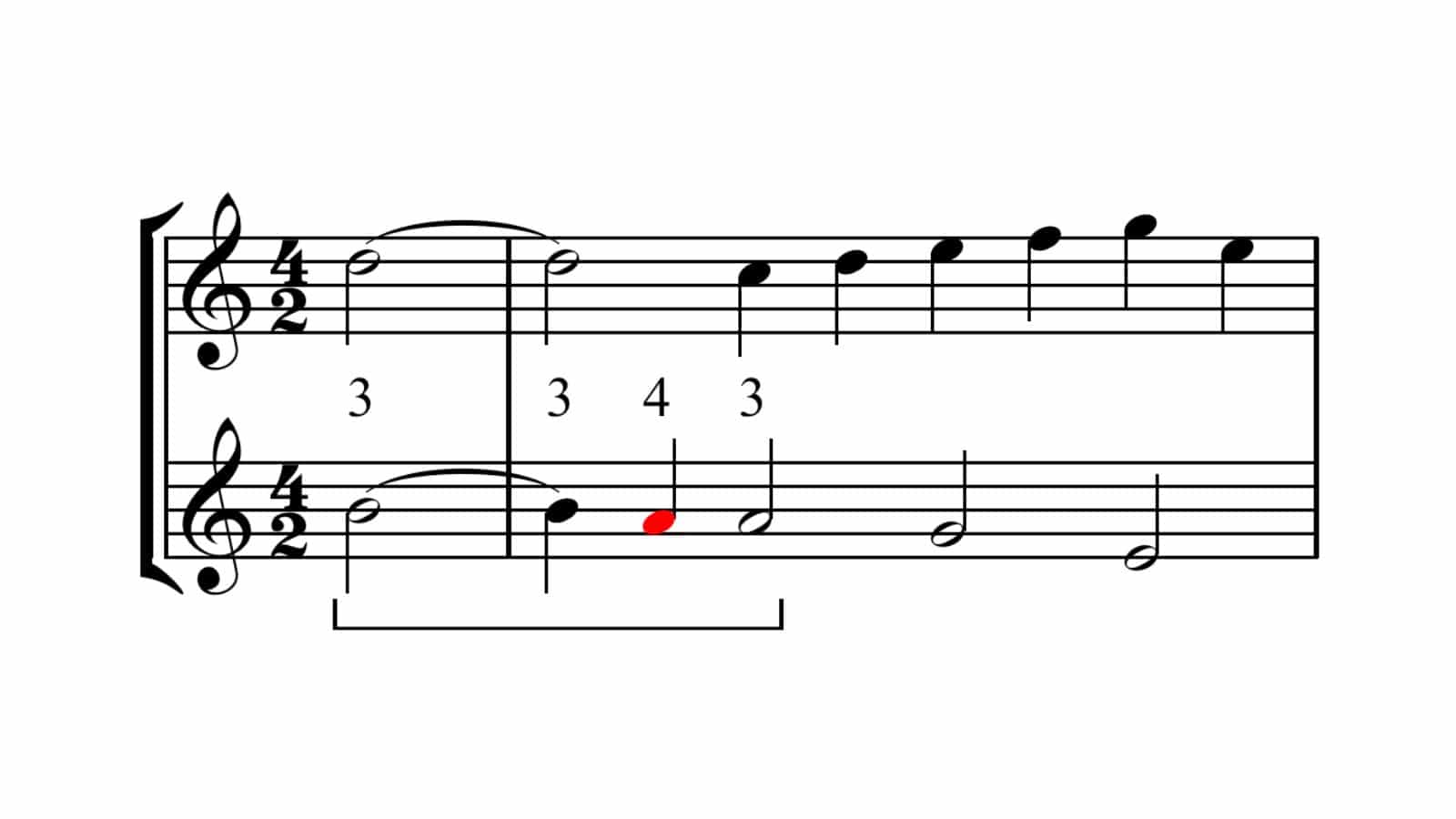
Portamento and glissando are both techniques related to the continuous gliding of a given note towards the next one, as if one note is being carried to the next.
DISCLOSURE: This post may contain affiliate links, meaning when you click the links and make a purchase, we receive a commission.
In fact, the word ‘portamento’ comes from Italian and means the act of ‘carrying’. The word glissando, in turn, comes from the French word ‘glisser’, which means to ‘glide’ or ‘slide’.
Although we can say that every portamento has a glissando, it is wrong to say that a glissando has a portamento. In this article, we will explain all the differences and similarities between both of these techniques and how they can be applied to the violin.
Portamento vs Glissando
Glissando
Glissando corresponds to any type of slide that can be done between two given pitches. It is also the name of the special ornament that is very common in fast passages of some music styles, such as the tango, where the violinist is required to play one note and quickly slide the finger towards a definite or indefinite pitch.
There is also a special type of glissando, the chromatic glissando. In all cases, the glissando, as an ornament, usually lacks the lyrical content that is heard in the portamento.
Portamento
The portamento is an expressive type of slide that can be made between two notes. It comes from the practice of singing, as singers have a natural tendency to connect the notes with a slide
When this type of slide is used by violinists in a lyric passage or to emulate the voice, it is called a portamento. Note that in the portamento there must be a slide, therefore a glissando, which is quite different from the non-lyrical glissando used in many violin pieces.
Portamento in the Romantic style
The portamento and the glissando were not part of the technique of the classical violin until the Romantic period (around the 19th century), when they became expressive tools used by many composers and performers.
Until then, classical musicians tended to maintain a more strict style of playing with a broad use of other types of ornaments such as ‘trills’, ‘grupetti’, and ‘mordenti’ in order to connect notes without the need of a slide.
All of the ornaments mentioned above refer to the act of adding extra notes between two pitches and originated in instruments that could not sustain the notes for so long, such as the harpsichord, the lute, and other stringed instruments.
What is curious is that these instruments were also not able to do a glissando like the human voice. The violinists incorporated all these ornaments as part of their technique.
During the Romantic period, players started using the glissando and the portamento as ornaments, as we can see from the indications of the composers of that period. The earliest recordings from the 20th century also show that it was common practice at the time to use the portamento widely and almost freely.
Types of portamento
To understand the portamento, we need to understand the parts that form it. In the portamento, there are always two main notes that correspond to our initial and destination pitches.
The glissando within the portamento does not always happen continuously from the initial to the final pitch; otherwise, it could sound very unnatural like a cat meowing in some instances; rather, it can be shortened and softened and occur anywhere between those pitches.
We can thus have many types of portamento according to where the glissando happens. The instances they are used is often a matter of personal taste; some players use or refuse specific types of portamento. Here is a list of possible types of portamento:
- Continuous glissando (must be done with one finger only)
- A glissando from the first note, interrupted before reaching the second note.
- Glissando starting right before the second note
- Glissando starting from the first note and resuming before the last note
There are also many other variations of the portamento, like those where the ascending glissando does not necessarily start exactly from the initial pitch but rather can start from a lower point, and it is also used by some players when the initial and the final pitched are the exact same note.
By reading only, it is not possible to have a perfect idea of the expressiveness of these ornaments, so, as a complement to this text, we also suggest the appreciation of following video on types of portamento as played by the great Belgian violinist of the mid-19th century, Eugene Ysaye, by Joanna Starucy-Smolec:
In this video, Joanna describes all the possibilities and combinations of portamento, either ascending or descending, with the same or different fingers.
The exhaustive list is also interesting for the performers who want to deepen their knowledge and/or improve their expressive capabilities on the violin.
The chromatic glissando
There is one type of glissando that is very difficult to be mastered, which is the chromatic glissando. It is usually done from a higher to a lower pitch, using just one finger. The player is required to stop the finger at each note of a chromatic scale (by half-steps) in a very fast way.
This type of glissando is taught and demonstrated by Professor Kurt Sassmannshaus in the following video:
The masters of the portamento
Mastering the portamento is not easy because the player needs to learn the perfect timing and speed of the glissando so that the whole portamento sounds natural and pleasant to the ears. Knowing how to do them well and knowing where to use them are just as essential.
Overusing them may sound a bit cliche and become uncomfortably familiar to the audience. There are two great violinists from the early 20th century who mastered this technique and inspired all the coming generations: Toscha Seidel and Jascha Heifetz.
Seidel: Meditation by Massenet
Heifetz: Melodie by Tchaikovsky
Comparing these recordings with the performances of modern players like Augustin Hadelich and Anne-Sophie Mutter, we can feel how the latter were inspired by the great masters of the past:
Hadelich: Songs My Mother Taught Me, by Dvorak
Kreisler: Liebesleid by Kreisler
Conclusion
Although there is some confusion between these two terms, the glissando and the portamento are different things. Their meanings can overlap in some instances. To make it easy to remember, we reinforce that every portamento contains a glissando, but not every glissando is a portamento.

